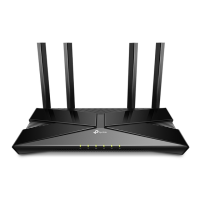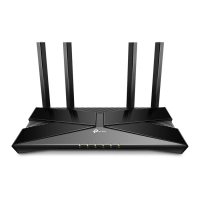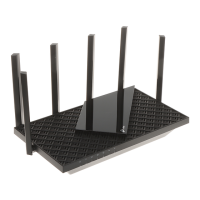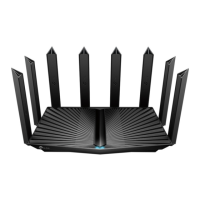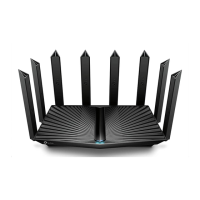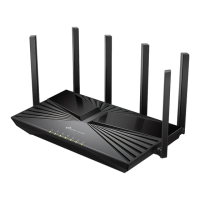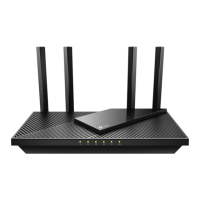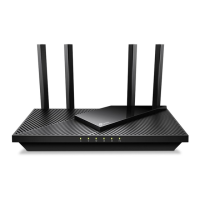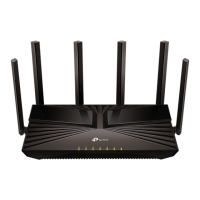31
Chapter 6
Wireless Settings
1. Go to Wireless or Advanced > Wireless > Wireless Settings.
2. Select Hide SSID, and your SSID won’t display when you scan for local wireless
networks on your wireless device and you need to manually join the network.
• To change the security option:
1. Go to Advanced > Wireless > Wireless Settings.
2. Select an option from the Security drop-down list: None, WPA2-PSK[AES], WPA2-
PSK[AES]+WPA-PSK[TKIP], WPA3-Personal, WPA3-Personal+WPA2-PSK[AES],
WPA2-Enterprise, WPA/WPA2-Enterprise. We recommend you don’t change the
default settings unless necessary.
• To change the transmit power and channel settings:
1. Go to Advanced > Wireless > Wireless Settings.
2. Select an option from the Transmit Power drop-down list: High, Middle or Low. The
default and recommended setting is High.
3. If Smart Connect is disabled, you can also change the following settings:
• Channel Width - Select a channel width (bandwidth) for the wireless network.
• Channel - Select an operating channel for the wireless network. It is recommended
to leave the channel to Auto, if you are not experiencing the intermittent wireless
connection issue.
• Mode - Select a transmission mode according to your wireless client devices. It is
recommended to just leave it as default.
• MU-MIMO - Enable it unless you experience connection issues with it turned on.
6. 2. Schedule Your Wireless Function
The wireless network can be automatically off at a specific time when you do not need
the wireless connection.
1. Visit http://tplinkwifi.net, and log in with your TP-Link ID or the password you set for
the router.
2. Go to Advanced > Wireless > Wireless Schedule.
3. Enable the Wireless Schedule feature.
4. Click Add to specify a wireless off period during which you need the wireless off
automatically, and click SAVE.

